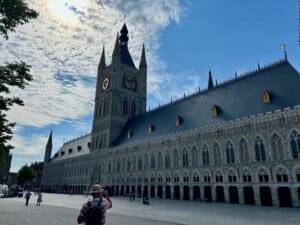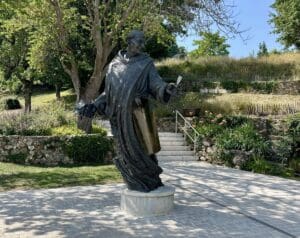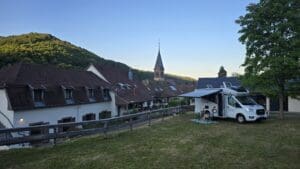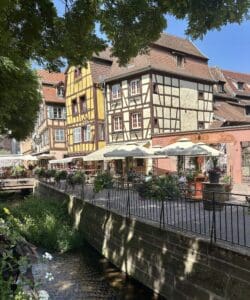Those who follow us have understood by now that we like to move as well as eat well. What could be more perfect than cycling between wine villages in the Mosel? Now, Germany may not be a country for gourmands, but even a schnitzel together with a glass of Moselle wine sits nicely after a long day of cycling. This is the first of two posts about our trip in the Mosel Valley. If you are more interested in reading about food and drink than cycling, you can read Henrik's post here.
We didn't feel like packing the bikes full of stuff, which is why we chose to book a ready-made trip with the organizer Active Scandinavia. Hotels and bikes were arranged by the organizer and our luggage was transported between hotels each day. We only needed to bring a few things to get us through the day, a rain jacket, water bottle and a map among other things.
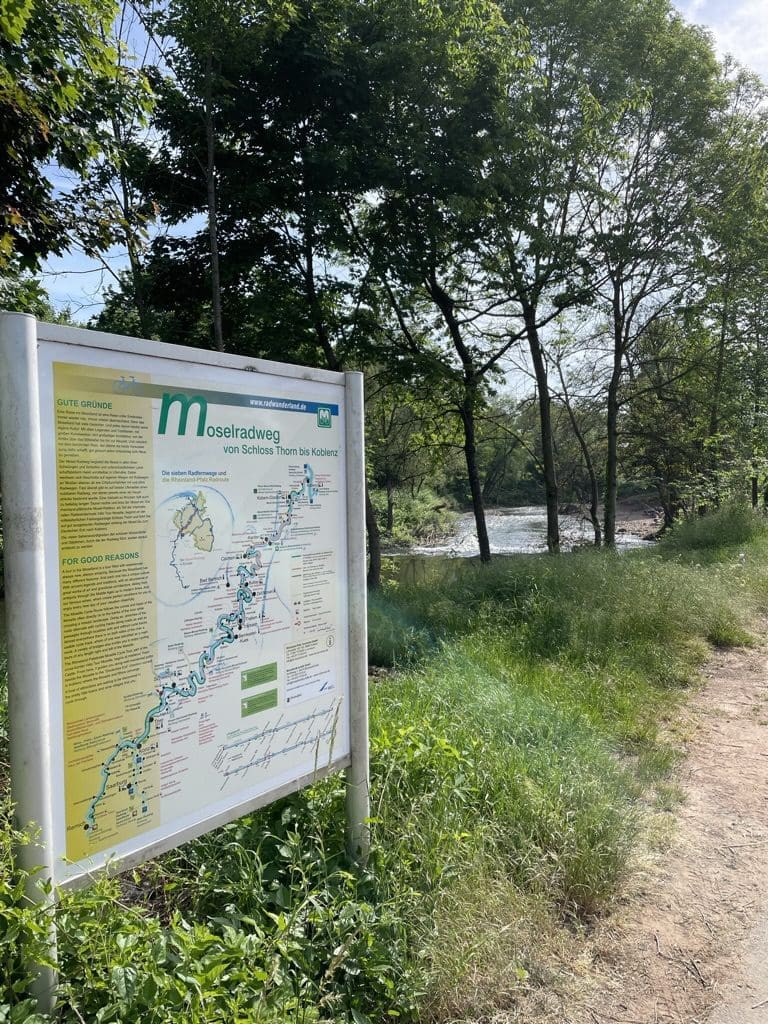
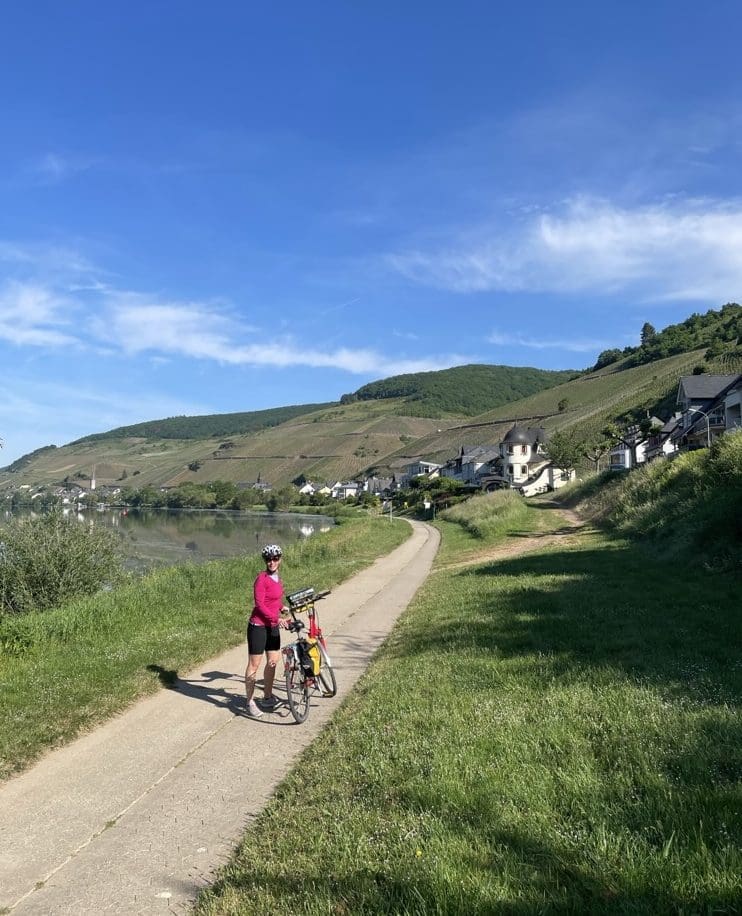
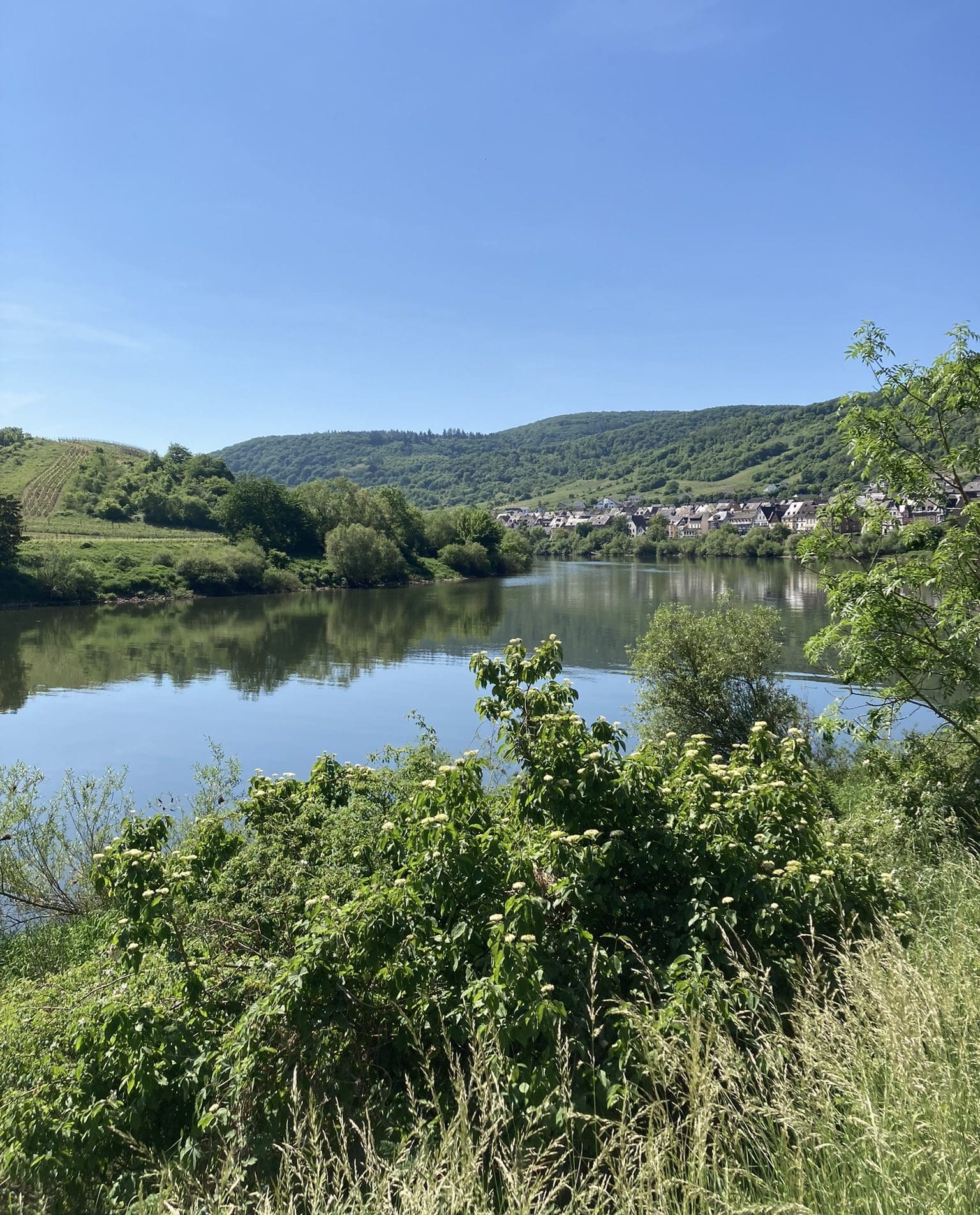
We flew to Frankfurt and then took the train to Trier. One tip is to try to book a train journey with as few changes as possible and with plenty of time between changes. German trains don't seem to be very punctual and are apparently cancelled at short notice. We were very late to Trier, which was a shame, as it is an incredibly beautiful city that we would have liked to see more of. Well, when we arrived in Trier we checked into our first hotel where we also found our bikes. We quickly left the hotel and headed out into the city in the beautiful summer evening. Having come from a rather chilly Sweden, it was absolutely wonderful to just walk around and look at all the people who were also out to enjoy the early summer heat. Trier is a cosy city with about 100,000 inhabitants and is said to be one of the oldest cities in Germany. When you read about towns along the Moselle, several of them are actually listed as Germany's oldest, but it's old all the same. Here you'll find the Porta Nigra, built by the Romans in the 100s, and the magnificent cathedral, both World Heritage Sites. More modern attractions include the Marx Fashion House, which, according to its marketing, caters to "The Rich and Royals". One wonders what they were thinking there. 🙂 For those who are further interested in Karl Marx, his birthplace can be visited a few blocks away.


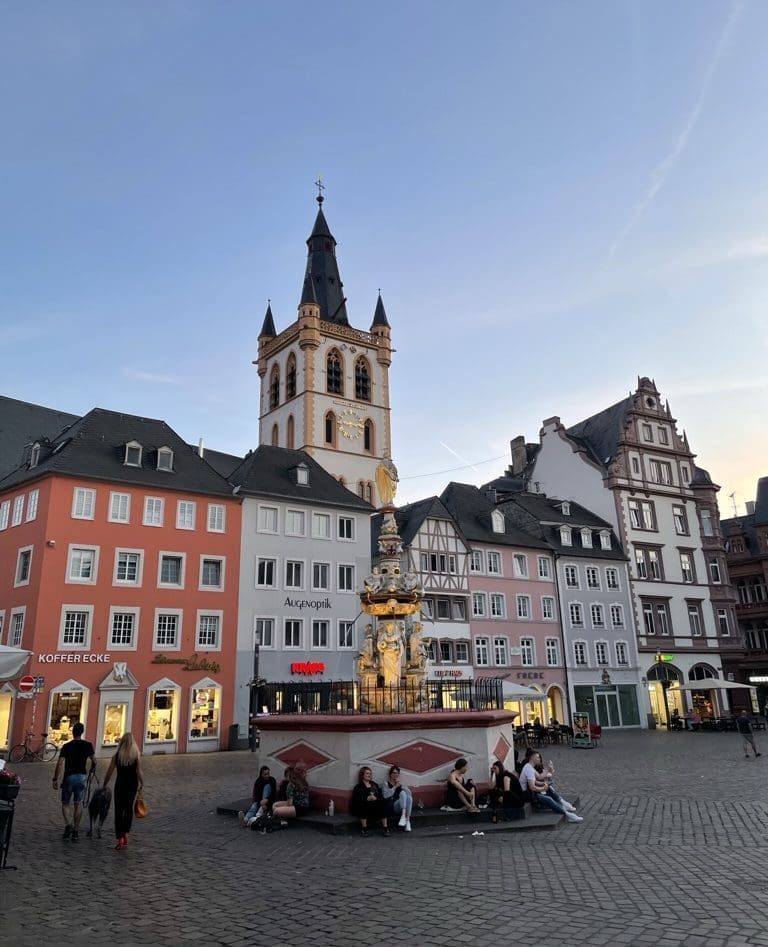
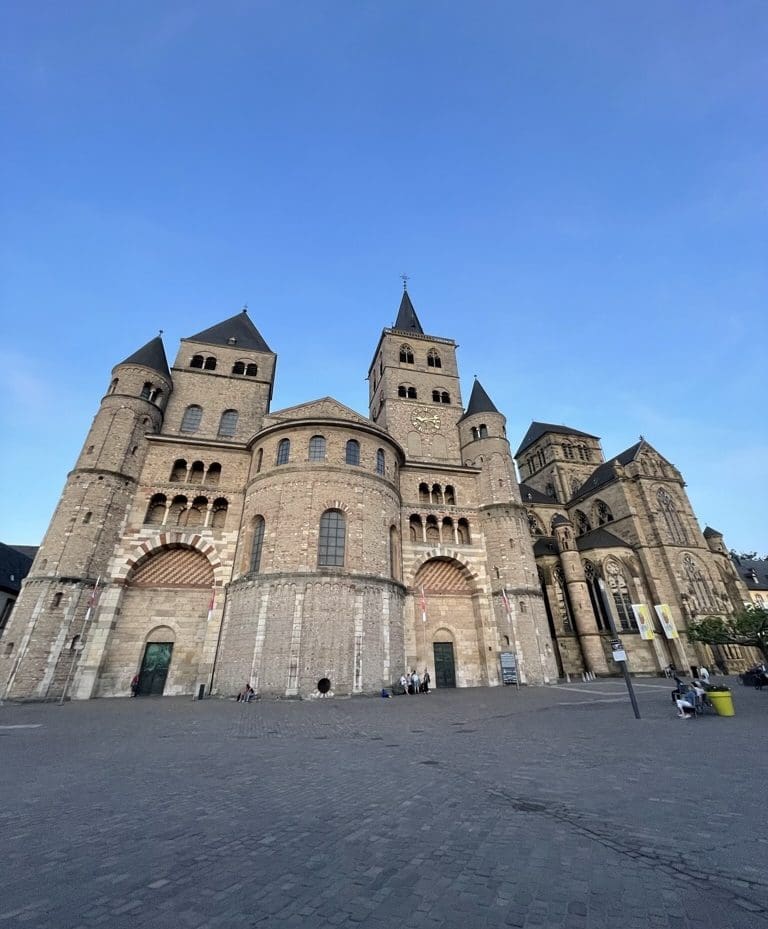
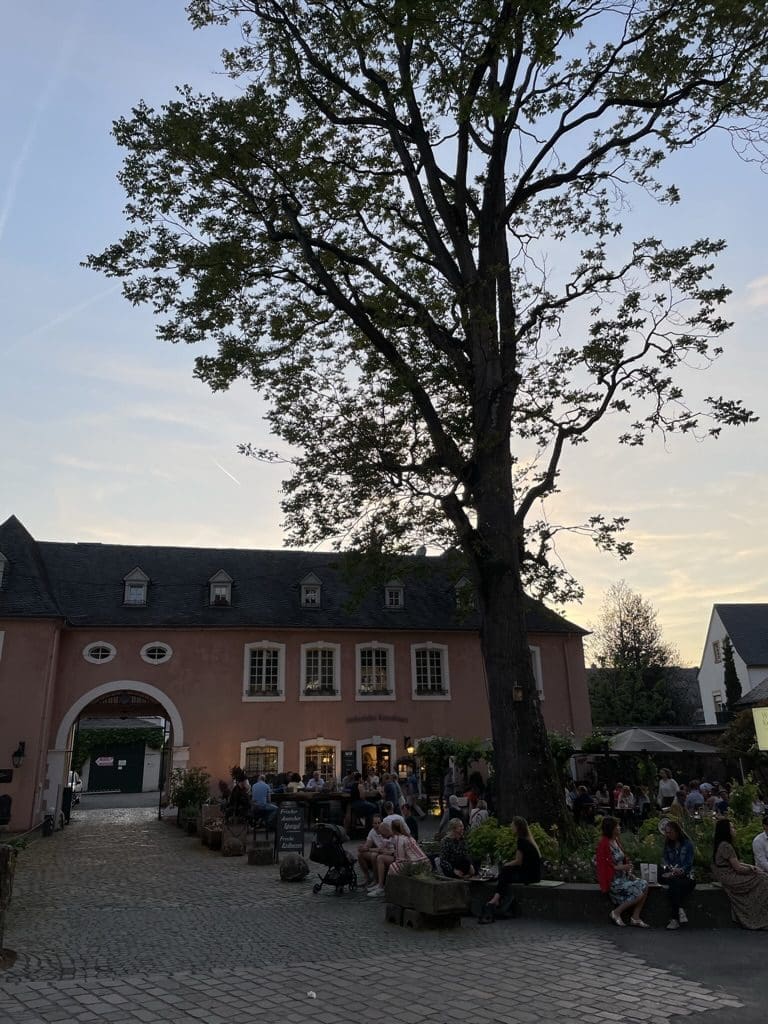
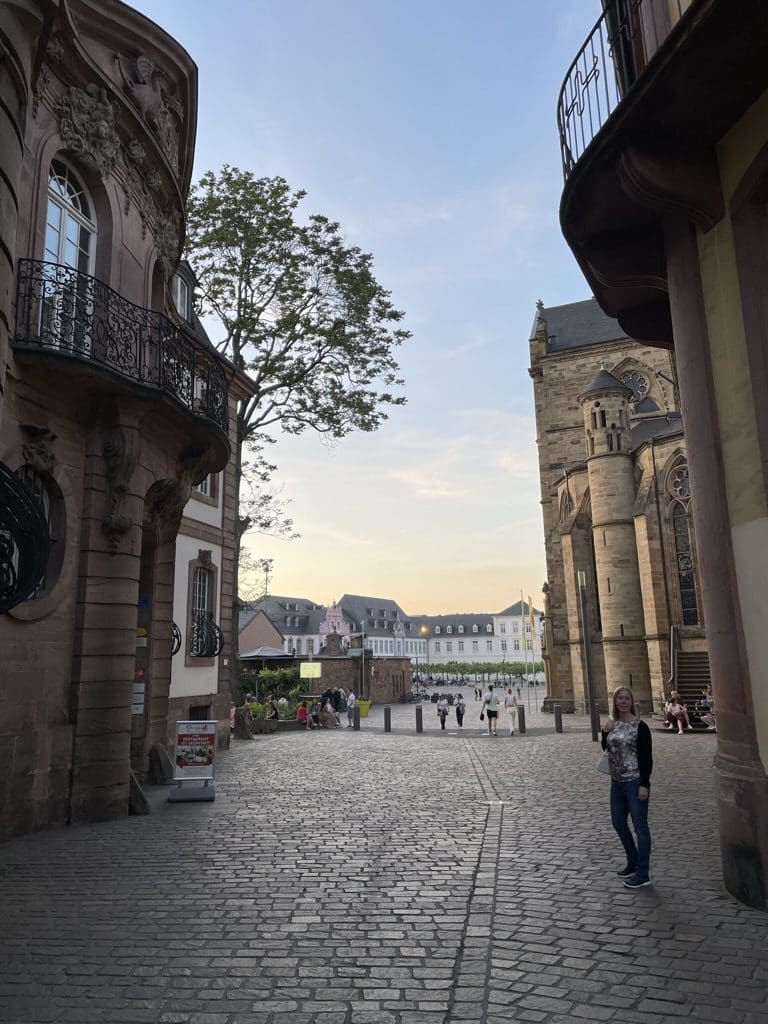
After a hearty breakfast and a short morning walk, it was time to jump on the bikes and head towards Trittenheim, which was our first stage of the day. We cycled an average of 4 miles a day on flat, nice roads and with really good bikes. We had rented regular bikes, but we were actually in the minority, the vast majority had electric bikes. We met a couple of Dutch people who we had coffee with one of the days and together we mocked the electric cyclists, it's cheating on these easily cycled roads! Joking aside, there is a positive accessibility aspect in being able to use an electric bicycle. However, I think that anyone who is in reasonably good health would be able to handle this cycling trip.
Good health or not, it needs a break along the way and it is best done with something cooling. We had an incredible luck with the weather, almost a little too lucky actually. In the middle of the day, the temperature climbed above 30 degrees so there were quite a few breaks, either just a nap in the shade or an ice cream break overlooking the water. The best coffee of the week was when we found a "Bubble Waffle" in Traben-Trarbach.



But the wine then, didn't we drink any wine, you wonder now? Of course we drank wine, but maybe not as much during the trip as we thought it would be. For one thing, it was very hot, so we set off quite early in the morning when many places were still closed. Then the roads were lined with vineyards, but the wine houses themselves were more in the small villages. Possibly there are more stops along the way in high season, but cozy vineyards where you could stroll around and sip wine, as we had hoped for, there weren't actually very many of them.
A very nice part of the trip was the early mornings and the evenings when the river was mirror-like and the streets quiet. Some parts of the cycle path unfortunately went right along a major busy road, which meant that you missed the quiet tranquility of the Mosel. Mostly, however, there were beautiful roads along the river and with small villages along the way. After the steady dinners that were served in the evening, we used to end the day with a walk in the villages where we stayed.
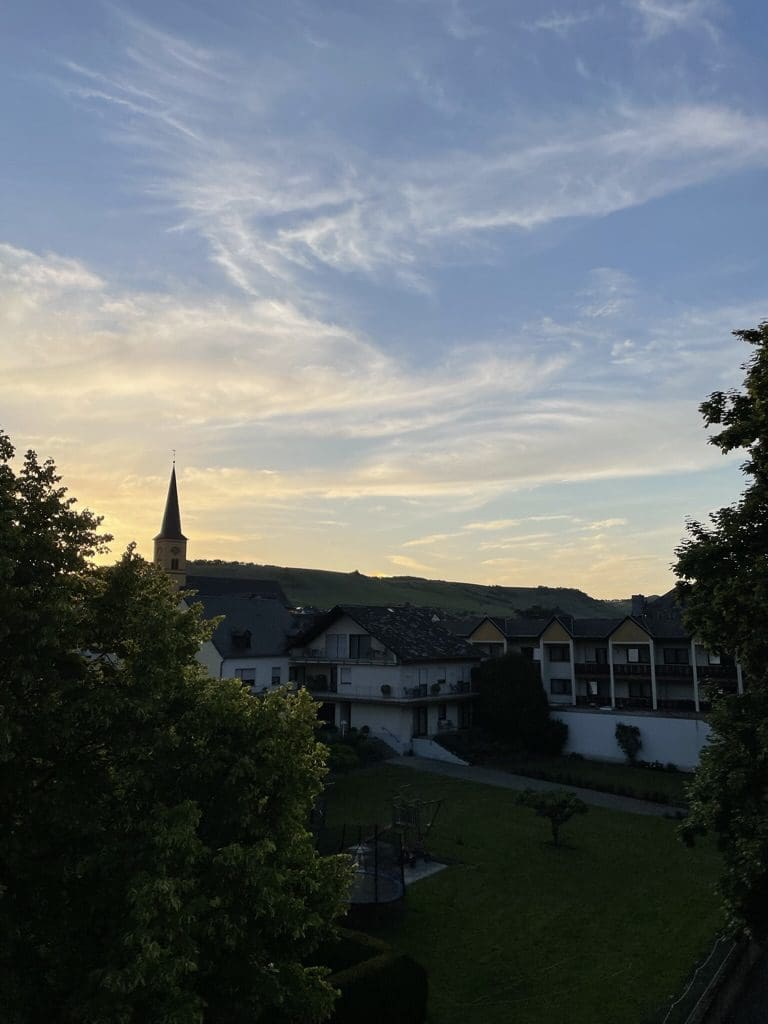


In Trittenheim we stayed at a hotel owned by a wine grower and there we were treated to a personal tasting of the house's best wines. If I mocked e-bikes, he mocked machines, here it is real craftsmanship that matters, he told us with emphasis. After seeing the steep vineyards along the way, I can't help but be impressed by the hard work of the winegrowers. Here can you see some pictures from this test and the next test we did in Bernkastel-Kues, where we tried Bernkasteler Doctor.
Incidentally, Bernkastel-Kues is an excellent stop on the way to Zeltingen, where our goal was on the second cycling day. Here there are narrow alleys and traditional half-timbered houses and reportedly Mosel's best ice creams at Eiscafé Venezia. We missed the ice cream as we only heard about it the next day. On the way to Zell, we met a man who was out with his little dog. He was an avid cyclist and ice cream eater, it would turn out, and from him we got tips on nice roads and an invitation that it was almost worth turning back to visit Venezia. A nice chat to be sure, but we still chose to continue in the right direction. The Germans are really good at ice cream, so we hardly felt starved during any part of the trip.
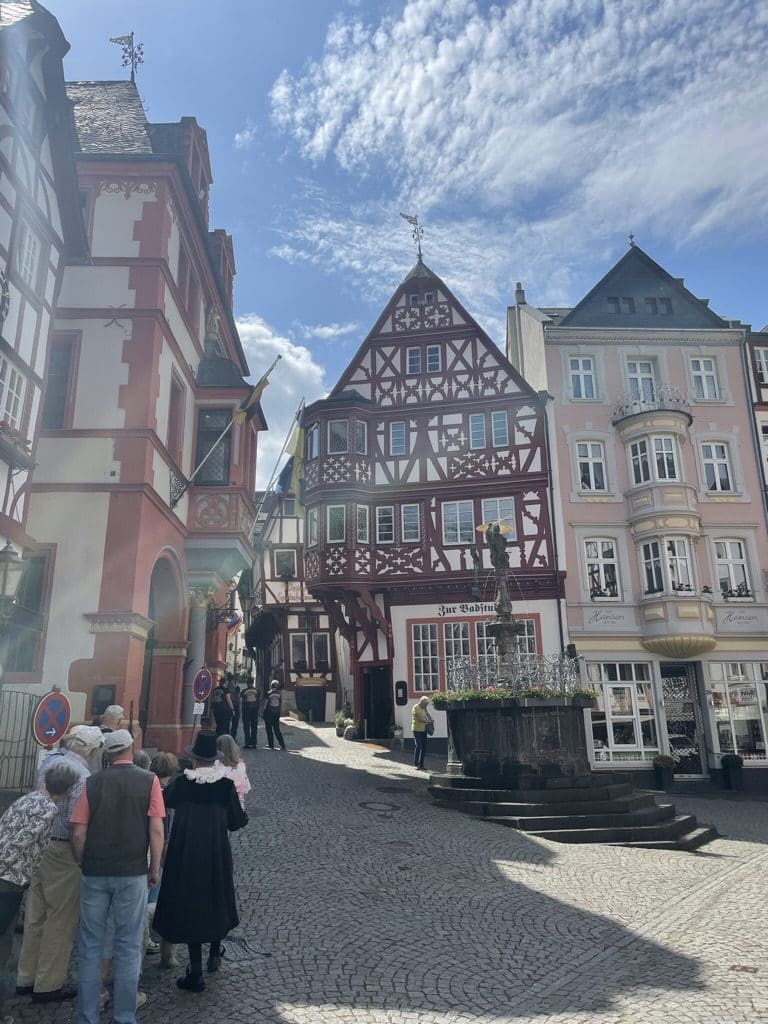


On the way to Zell we passed Traben-Trarbach. Another one of the towns that has a part on either side of the river, preferably with a massive gate on the bridge over the water. It was scorching hot during the day so it was nice to get into the shade in the small alleys every now and then. Nice to get off the bike and stretch your legs too, maybe to say hello to a knight. 🙂
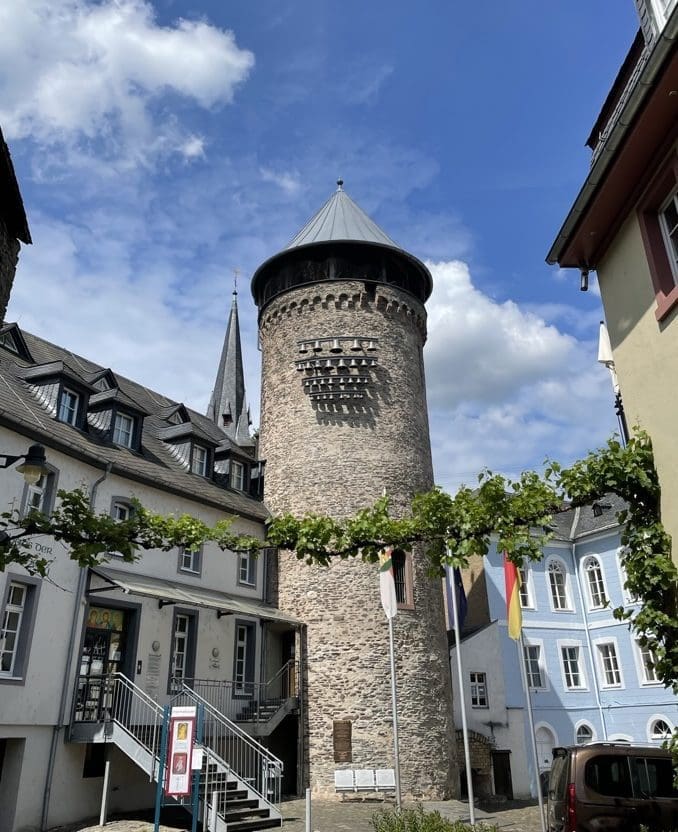


In Pünderich we found the perfect vineyard for Rendahls. Sparkling wine and ice cream were produced here. The ice cream was made in the village and the cult came from the farms you see in the background of the picture below. Talk about locally produced! I don't think I've drunk any good sekt before and probably had an idea that it's not very good bubbly, but as always there are several varieties. Sparkling wine is usually produced by tank fermentation, but a small proportion is produced using the traditional (champagne) method. This sekt was made according to the traditional method and was fantastically good. An ice cream on it and we had new energy to get on to Zell.
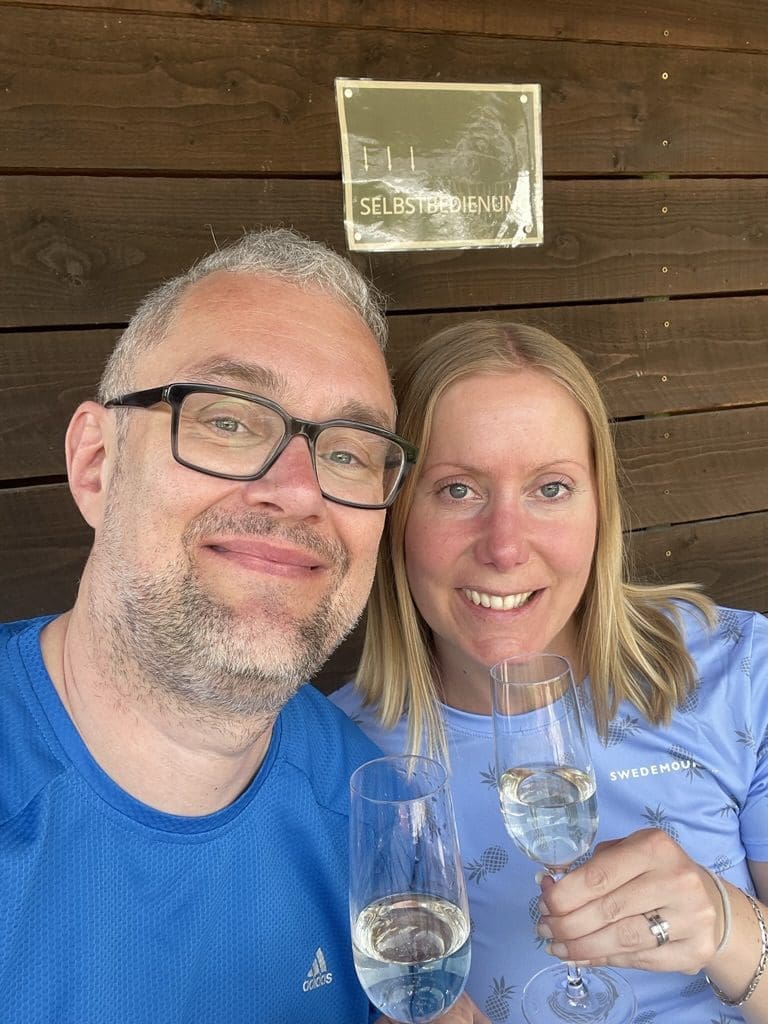

Zell is best known for its Schwarze Katze winery and one of the Mosel's oldest wine festivals, held annually in June. The small town has many small streets and a nice promenade. Here we also got the explanation as to why so few places accept payment cards. We talked to a girl who worked at the bar where we had a drink before dinner. She was one of the few people we met who spoke good English and she told us that restaurants and shops can charge up to 9 % in fees for card payments, especially for small purchases. Don't forget to bring cash on the trip, so withdrawing from an ATM also cost at least €5 per withdrawal with foreign cards.


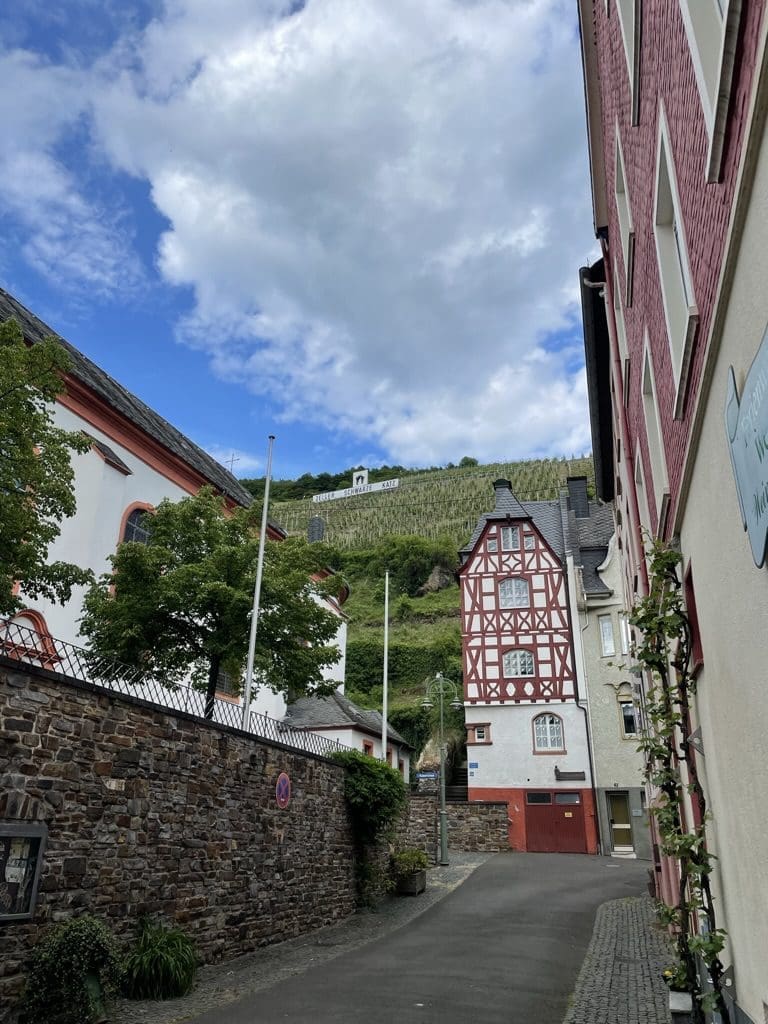
The penultimate cycling day was also the longest ride, five miles to Treis-Karden, with a stop in the famous town of Cochem. I had read a lot and seen films about Cochem so I was really looking forward to coming here, but maybe I had too high expectations because I probably couldn't really see the charm of the town. Henrik muttered at some point that the city is like a mix of Stockholm's Old Town and Edsvalla Market. After an iced coffee in the shade, the impression was a bit better, but he was right that there were many old alleys crammed with cheap market clothes and other knick-knacks. The castle that you see in the background of some of the pictures is supposed to be really nice, but as this was one of the hottest days and we were quite tired, we weren't so keen on the steep hill up to the castle. We looked around for about an hour, but I still liked both Zell and Bernkastel better. Cochem was far too touristy for me to appreciate properly.
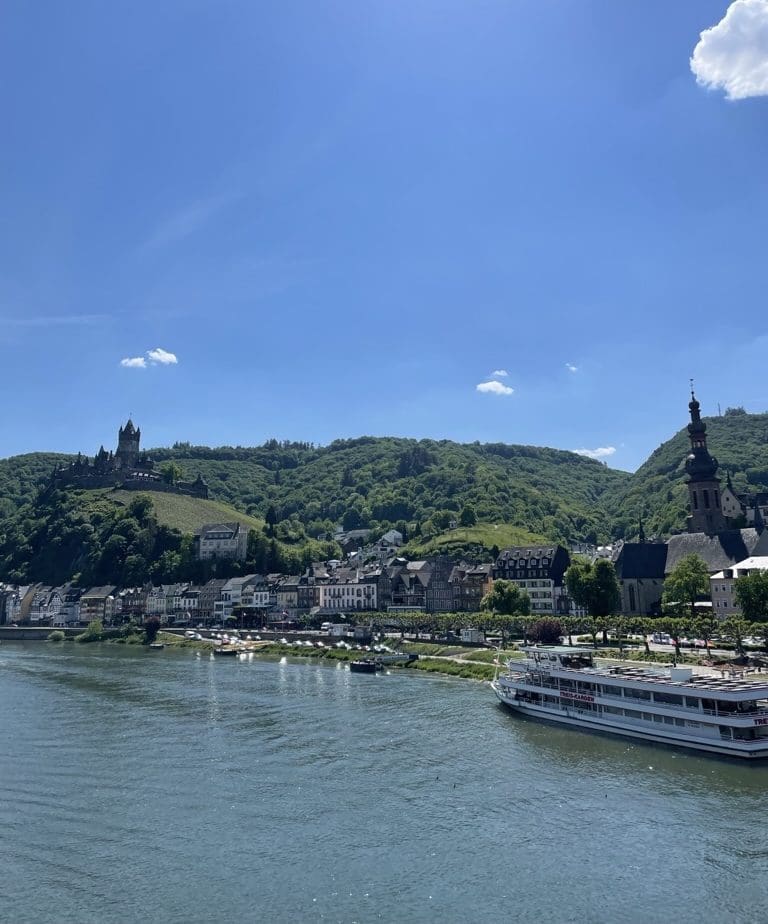
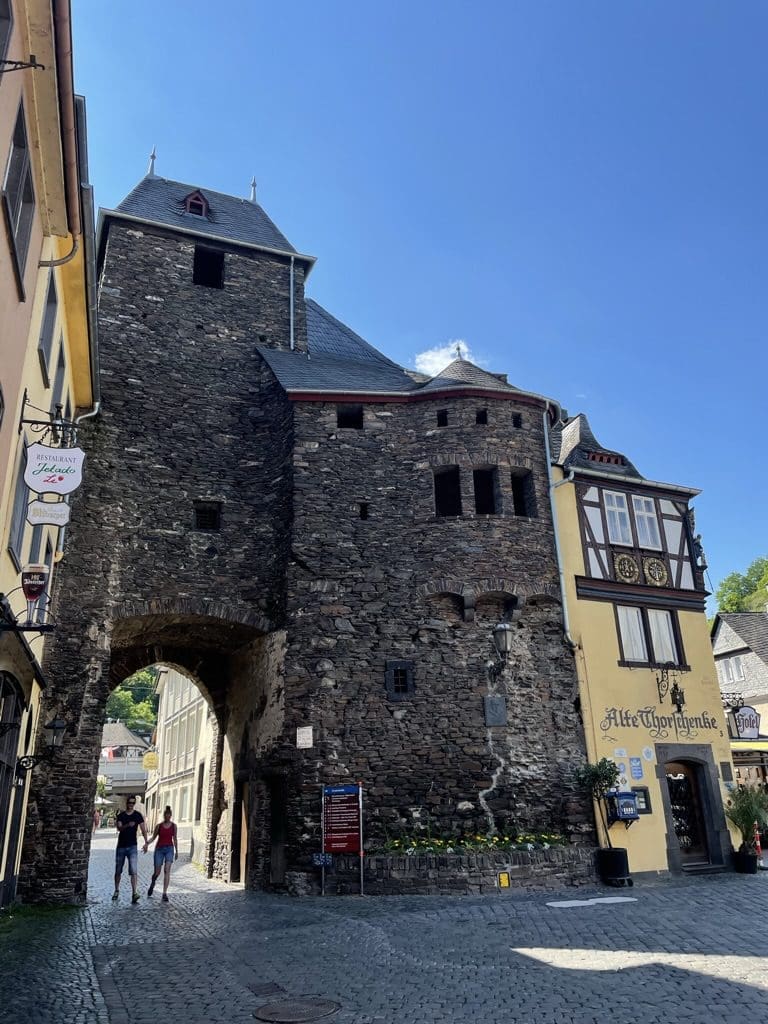

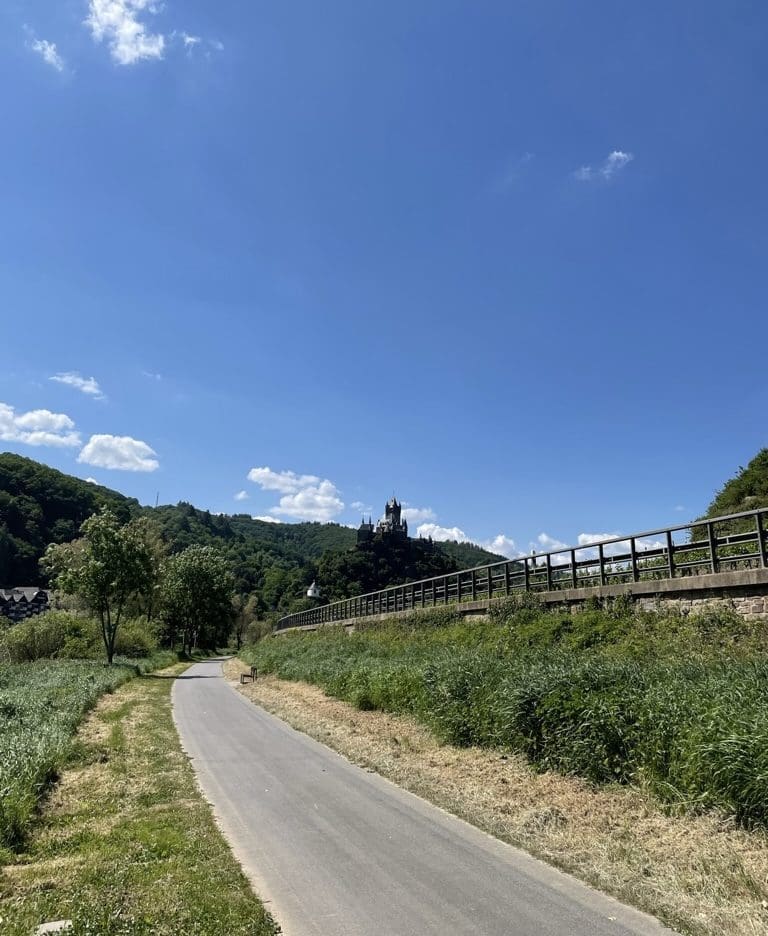
After a good dinner in Tries-Karden and a fantastic breakfast, our last cycling leg to Koblenz started. The breakfast thing, by the way, is really the Germans' thing. The food was honestly so-so several days, but the breakfast was always great. Being the breakfast person that I am, breakfast was always the best dining experience of the day.

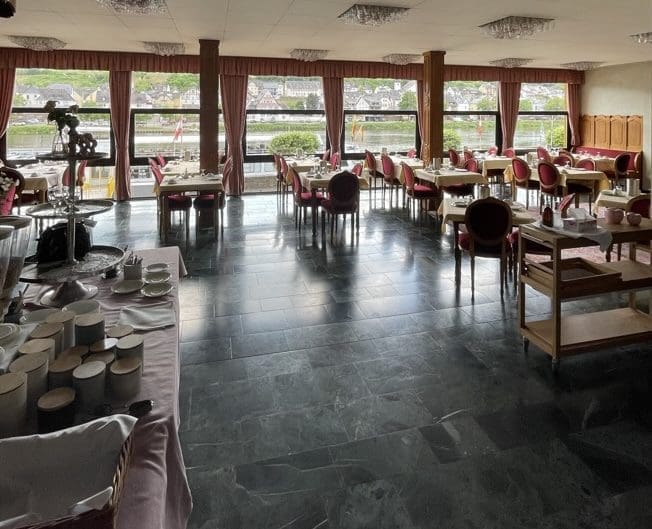

After five days of cycling and some complaining about pain in the back, it was finally time to arrive in Koblenz, leave the bikes and celebrate a good ride. We left the hotel after a quick shower and headed to the ice cream parlour we had spotted from the train a week earlier. Here we ordered "Ein grose eis". We had actually picked up the word for ice cream along the way. A little red-faced and tired, we finally reached our destination.
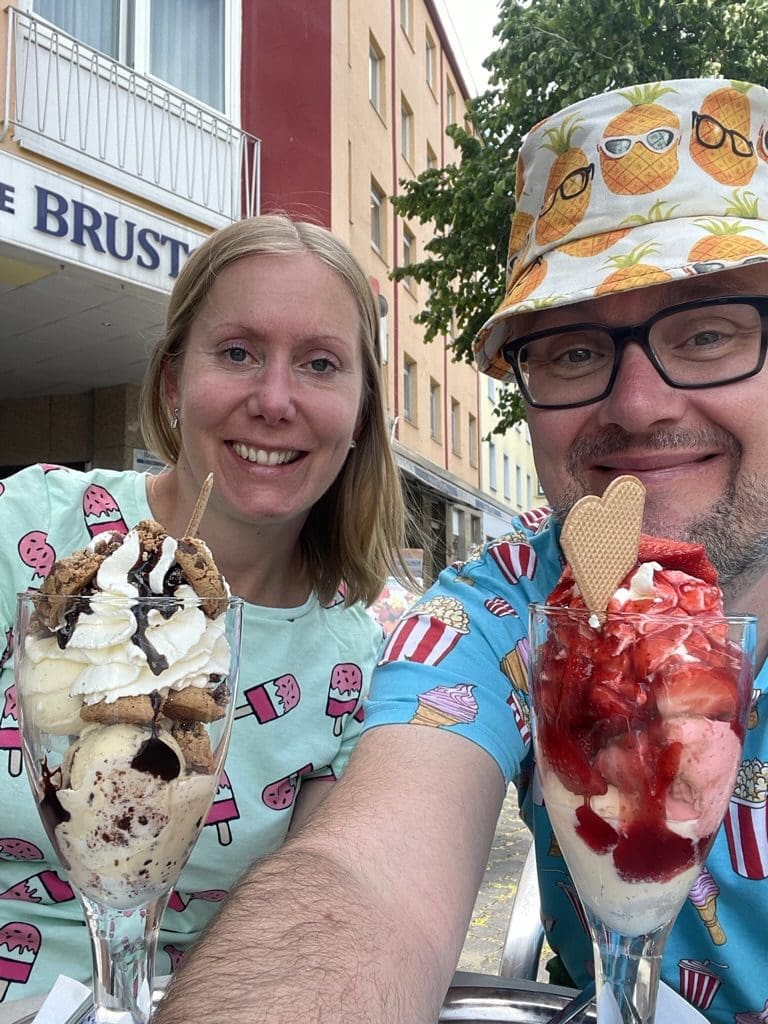
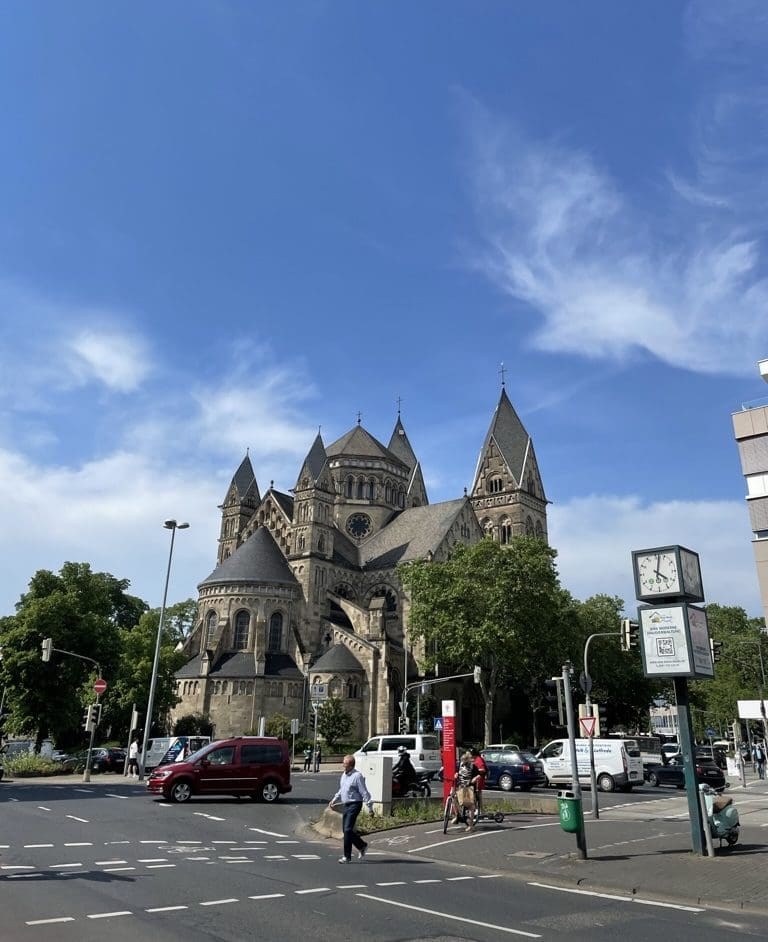

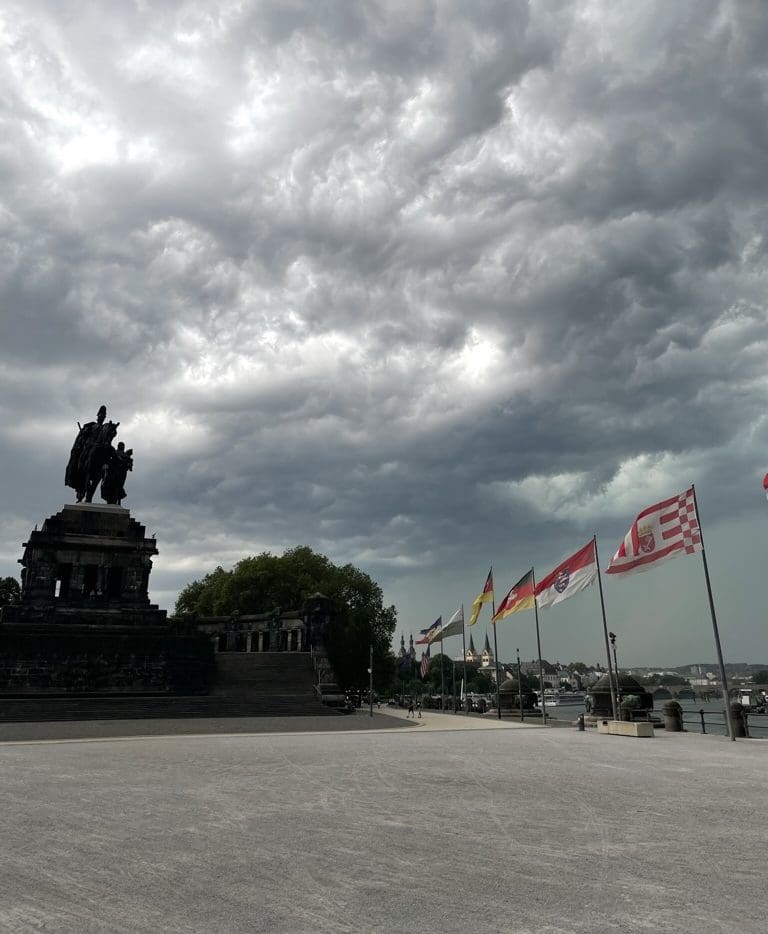

After the ice cream we took a walk to explore Koblenz. It is a slightly larger city than Trier and a bit more modern, but Koblenz also has older neighborhoods. However, the town is most famous for its memorial out on the promontory Deutsches Eck where the rivers Mosel and Rhine meet. The monument is a gigantic statue of William I on horseback and was erected in the late 19th century in his honor but is today a memorial to the unification of Germany. Flags from all of Germany's federal states fly along the shore.
Our luck with the weather also continued in Koblenz but now it started to blow up properly, just see the dramatic clouds in the picture from the cape. It was time to head back into the center and we were just passing a winery when the skies opened up and the rain poured down. But what did it do when it turned out that the wine house had excellent wine. A few glasses later the sun peeked out again so we could walk back to the hotel with dry shoes for our last dinner of the trip.
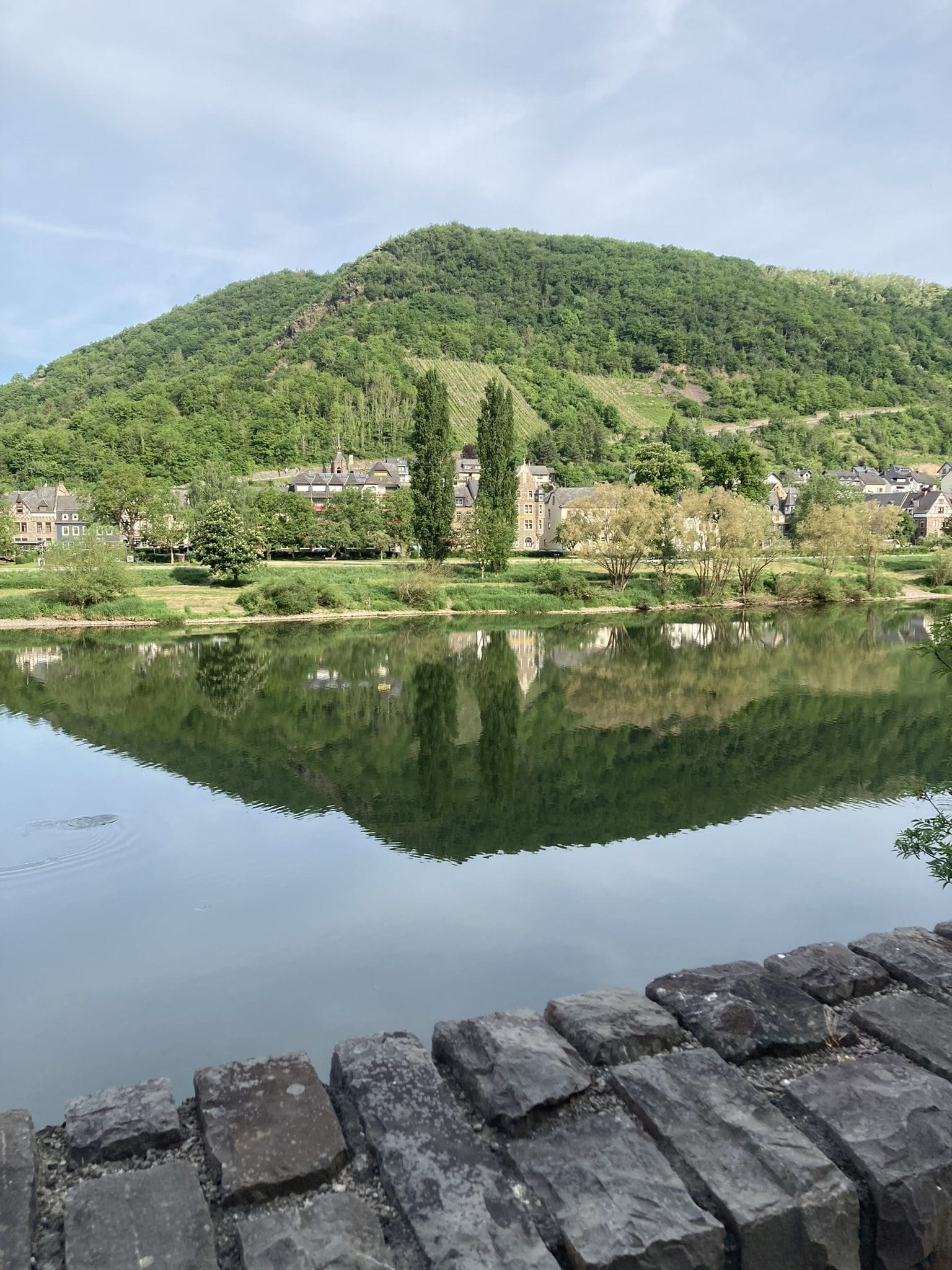

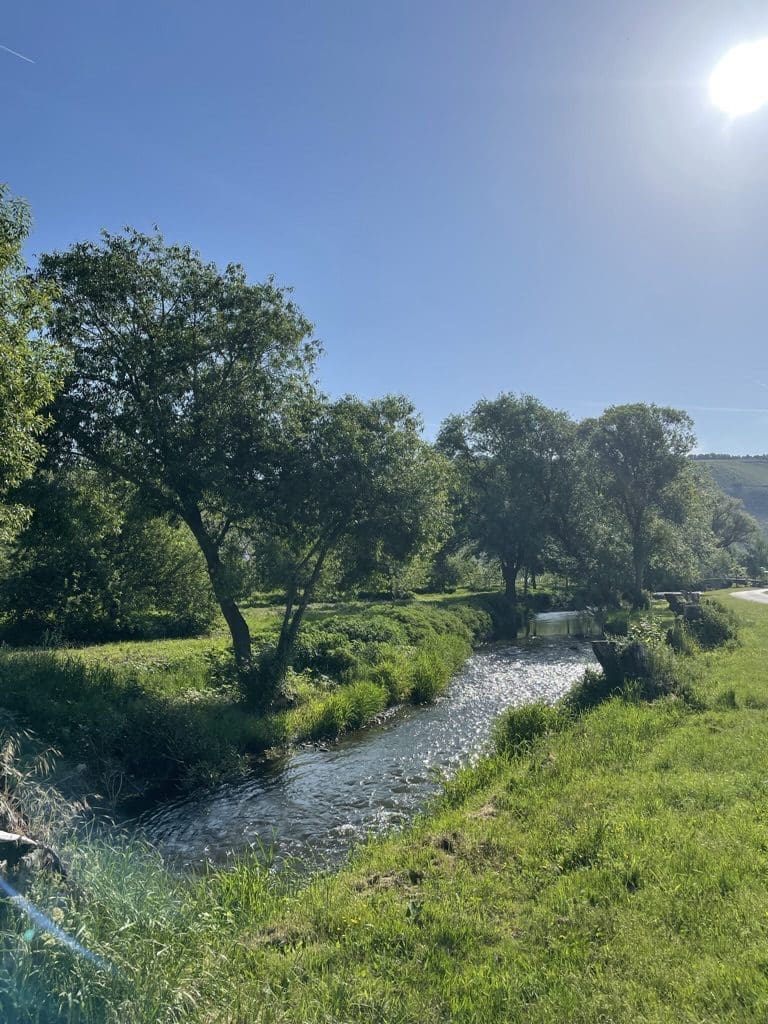
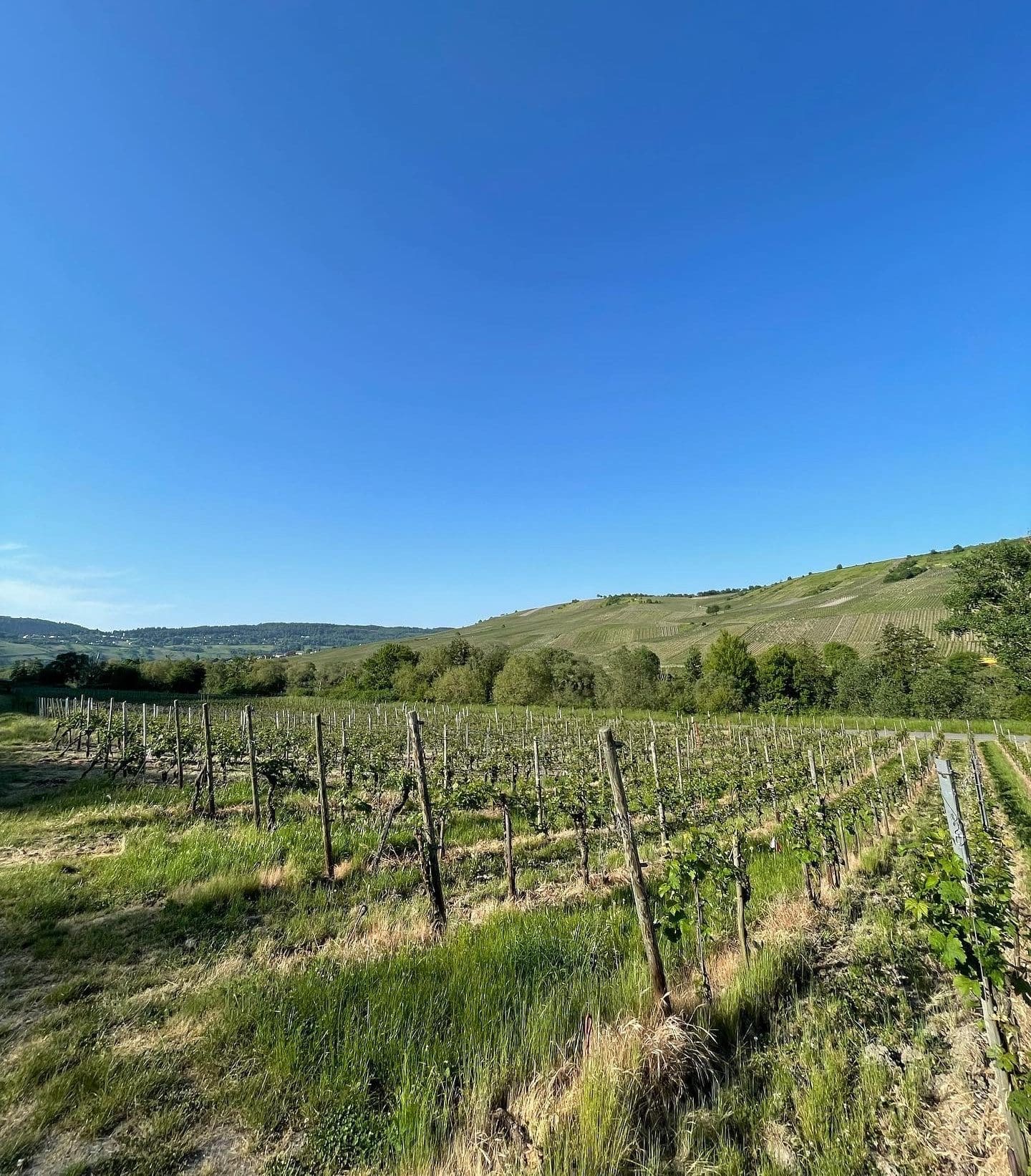

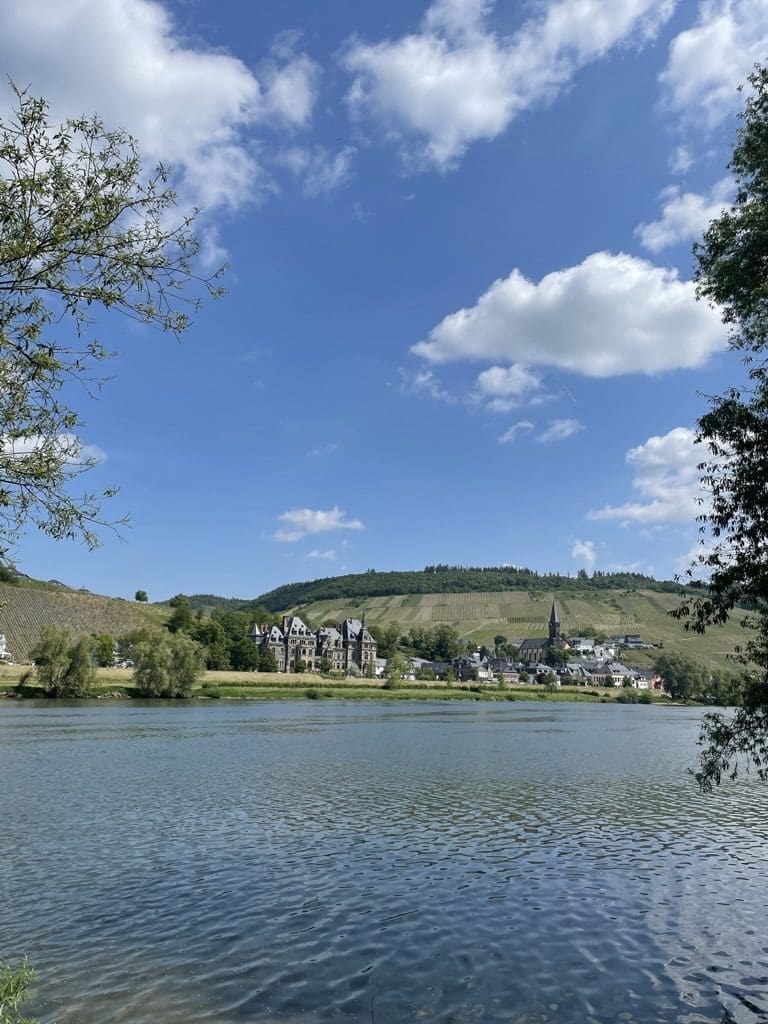
This was our first cycling holiday and in my opinion a wonderful way to travel. The arrangement of having the hotels booked and the bags moved between the hotels was really good. So nice not to have to think about packing during the day. Even though a lot can be loaded onto the bikes, you also want to avoid carrying your bags around when you stop along the way. I also thought it worked well to rent the bikes on site instead of bringing my own. We have rented bikes on shorter holidays in Sweden sometimes and then the quality has been variable, but here it was top class. The Mosel tour was incredibly beautiful, the only thing I have to point out is that the cycle path sometimes ran very close to the main busy road. There were cycle paths along both sides of the Moselle but sometimes it felt like we were on the wrong side of the river when we saw the seemingly calm road on the other side and we cycled alongside a motorway after following the map provided by the organiser. However, it is about finding the balance between the beautiful, slow route and the fast, straight cycle path. If you like food other than German, maybe you should try a tour other than the Mosel tour instead. Henrik has here wrote about our food experiences on the trip and we can safely say that the wine and ice cream are clearly better than the food. There are a bunch of similar cycling and hiking holidays with Active Scandinavia and corresponding organizers where you cycle or hike in, for example, France or Italy. For example, we are very keen to cycle between vineyards in Champagne. But that's another trip…

